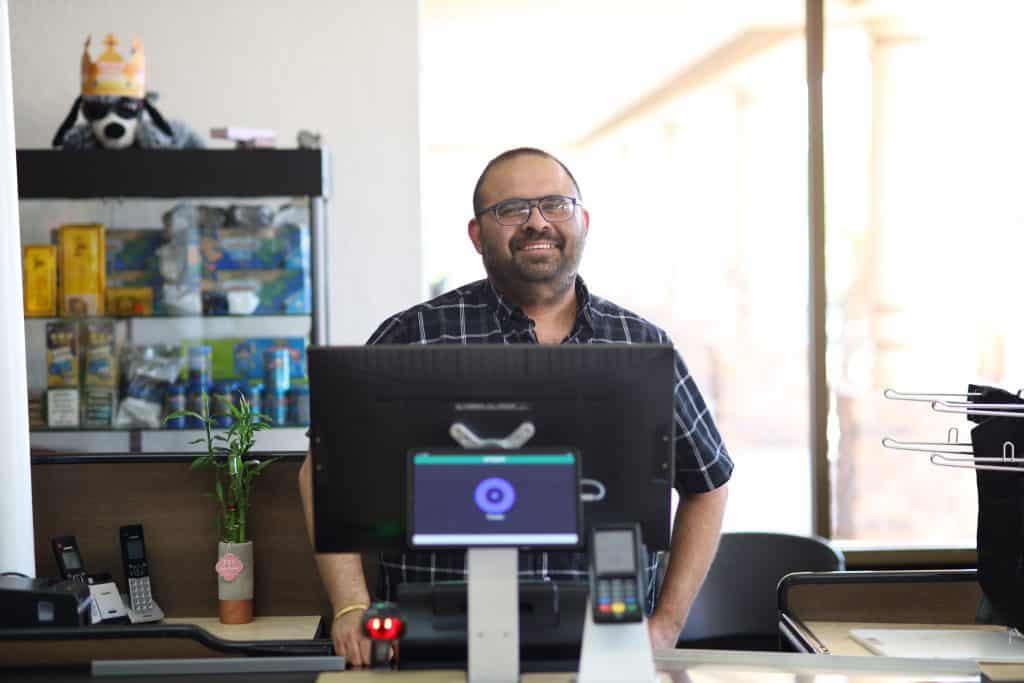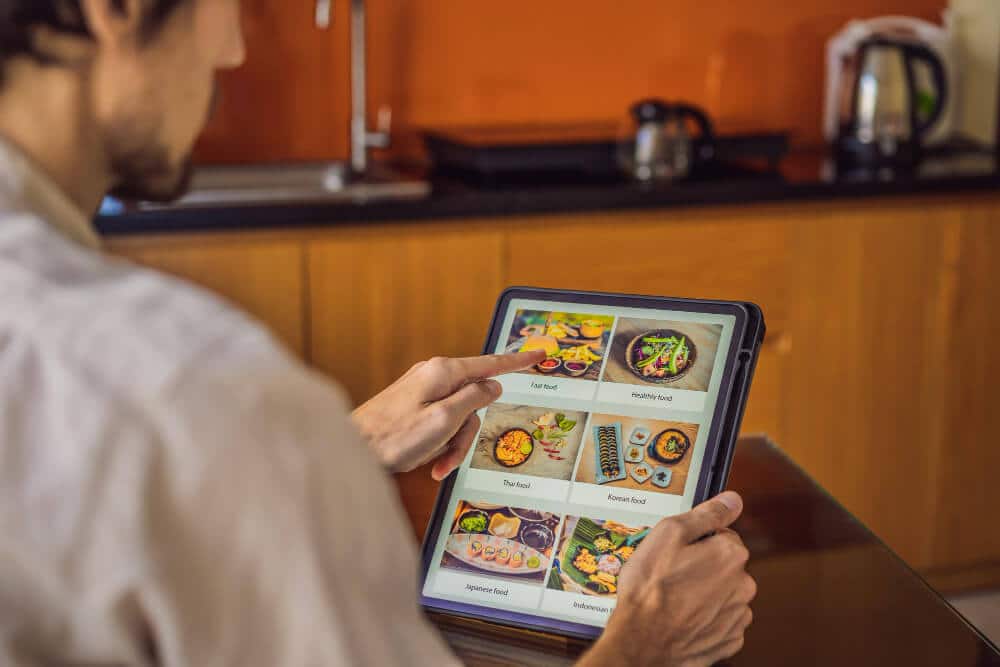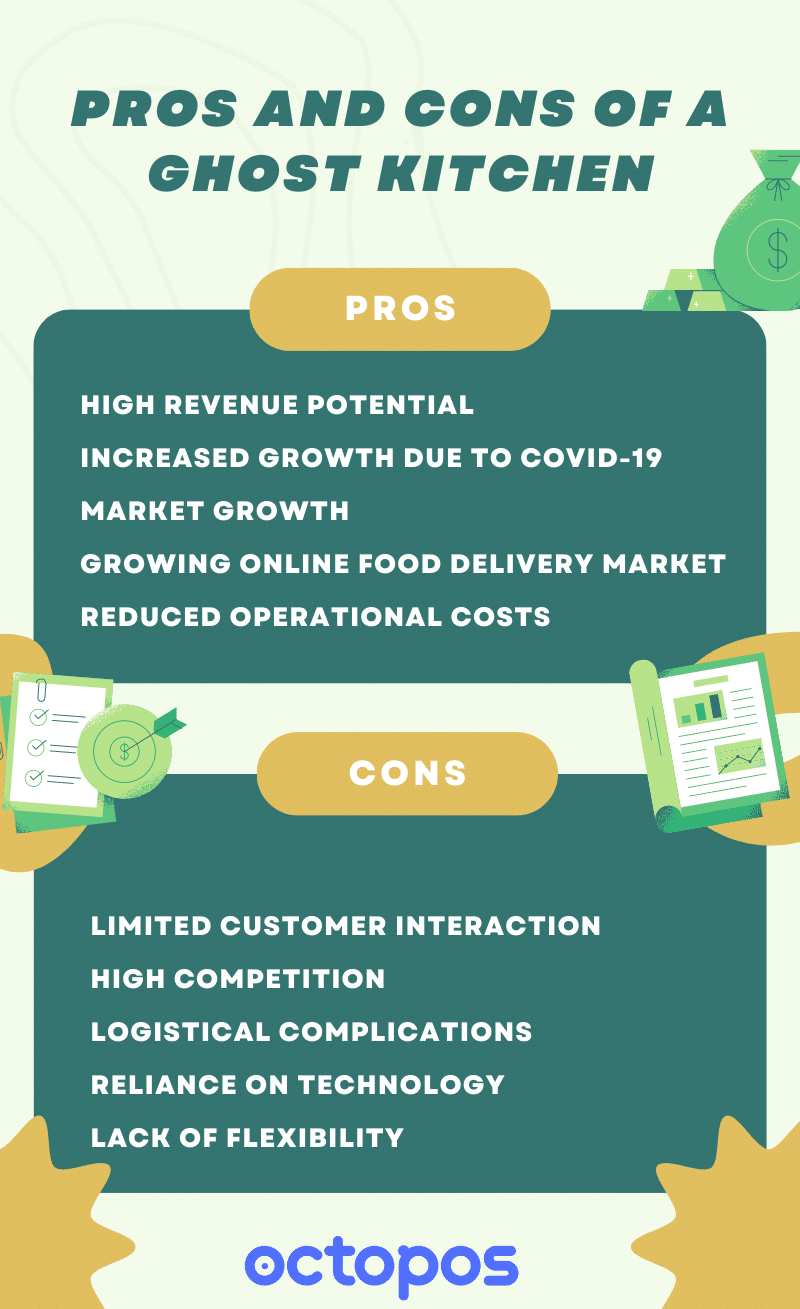If you are looking to dive into the food industry but without the hefty upfront costs, opening up a ghost kitchen might be the right move for you. A ghost kitchen, also known as a virtual restaurant or cloud kitchen, operates as a delivery-only establishment.
That means you can cook up a storm in a centralized kitchen and have your food delivered straight to your customers without them ever having to step foot inside a physical storefront.
In this ultimate ghost kitchen startup guide, we will walk you through everything you need to know to get started, from choosing the right concept to designing your menu and setting up a delivery system.
What is a Ghost Kitchen?
A ghost kitchen, also known as a virtual restaurant or cloud kitchen, operates solely on delivery. Ghost kitchens don’t have a physical dine-in or storefront location, and they offer their menu items through third-party delivery apps or their in-house delivery system.
Ghost kitchens are essentially commercial-grade kitchens where food is prepared and cooked, and orders are dispatched from a centralized location.
In simple words, ghost kitchens are delivery-only restaurants that don’t require a physical space to operate – which makes them a cheaper alternative to brick-and-mortar restaurants when wanting to enter the food industry.

Streamline your business with Octopos– A Complete POS System with Big Boys Tools without the Big Price
It is a lot more than a point of sale. Octopos is easy and intuitive for you and your staff to use. Yet you get all these sophisticated tools to manage inventory, track and engage customers, get meaningful insights into your business, and much more.
Start a Ghost Kitchen in 10 Steps
To start a successful ghost kitchen, you will need to follow these 10 key steps:
1. Choose Your Concept
Choosing your concept is the first step to starting a ghost kitchen. Your concept is your restaurant brand and it is essential to choose one that aligns with the customer’s needs and preferences.
Research the most in-demand cuisines in your area and identify what types of restaurants are currently underserved to choose a concept that meets market demand while standing out from the competition.
Consider your target audience and their preferences and select a concept that resonates with them.
2. Develop a Business Plan
Developing a business plan is crucial if you want to start any business, including ghost kitchens. It provides a roadmap for achieving your goals and can help secure funding from investors or lenders.
- Your business plan should cover:
- Your concept
- Target market
- Competition
- Marketing strategy
- Staffing plan
- And financial projections
Thorough research is necessary to ensure that financial projections are realistic. The marketing strategy is crucial since as a ghost kitchen, you will be relying solely on delivery orders for revenue.
A comprehensive business plan will keep you organized and focused on your goals, and provide investors or lenders with the information necessary to evaluate your business.
3. Find Location
Finding a location for your ghost kitchen is a critical step. Since ghost kitchens are deliver-only services, the location should be strategically chosen for easy access to customers and transportation routes.
It’s not necessary to have a storefront located in a high-traffic area since customers won’t be coming to your location. Instead, choose a location that’s easily accessible for your delivery drivers and remote it from your target market.
When deciding on a location, consider factors like zoning regulations, rent costs, parking availability, and access to necessary amenities. This way, you can ensure that your ghost kitchen is set up for success.

4. Set Up Your Kitchen For Efficiency
Setting up your kitchen for efficiency is crucial to make sure high quality and timely dish execution. Consider setting up a kitchen layout that maximizes usable space and equipment flow, and train your staff on proper food handling and cooking techniques.
Also, invest in commercial-grade equipment designed for heavy use as maintaining proper functionality is essential for meeting customer demand.
Additionally, develop kitchen protocols for inventory management and cleaning to ensure a safe and sanitary environment.
The last thing you want is to be late for orders and unhappy customers, so make sure your kitchen is optimized for efficiency.
5. Obtain the Necessary Permits and Licenses
Obtaining the necessary permits and licenses is a critical step in starting a ghost kitchen. Contact your local health department and regulatory agencies to obtain the permits required for your kitchen’s operation such as food handling permits and fire safety permits.
It’s crucial to comply with all regulations to avoid legal problems down the line. Ensure all permits and licenses are updated and adhere to local laws and rules for a successful and legal ghost kitchen business.
Depending on the location you are planning to operate from, you may also need to secure zoning permits from the local government. The cost might also vary from one area to another, so make sure to research your local ordinances and requirements before you start.
6. Develop Your Menu
Developing a menu that aligns with your concept and target market is crucial for success. Research popular dishes and ingredients, and consider dietary restrictions and food trends.
You can visit other restaurants and take notes on their menu items, as well as at review sites to see what customers have to say about dishes.
Create a menu that is easily executable for efficient operations while offering various options to appeal to a broad customer base. Don’t forget to price items competitively and account for ingredient costs to ensure profitability.
7. Hire Staff
Staffing is a critical component of running a ghost kitchen. Hire staff members who have culinary expertise and the ability to work efficiently in a fast-paced environment.
Consider hiring delivery drivers with knowledge of the local area and excellent time management skills to streamline the dispatching process. Hire staff who align with your business’s mission and values to make sure your business becomes a long-term success.
Your staff is the face of your business, so be sure to invest in training and provide clear guidelines and expectations for the best results. You don’t want to skimp on staffing your ghost kitchen – it is an essential part of the business.

8. Set Up Your Technology Systems
As a delivery-only establishment, technology systems are essential to your ghost kitchen’s operation.
Establish a user-friendly website or mobile app to streamline the ordering process and provide customers with real-time tracking of their orders. Keep your website/app simple and easy to navigate, and make sure it matches your branding.
Utilize software to manage orders, inventory, and invoices effectively. Additionally, make sure your kitchen has reliable internet, phone systems, and POS terminals to ensure efficient operations.
9. Launch Your Marketing Campaign
Use a mix of digital marketing strategies, such as social media, email marketing, and search engine optimization to build brand awareness and drive sales. Collaborate with food bloggers, influencers, and local media outlets to increase exposure.
Provide incentives like discounts for first-time customers to gain traction. Make sure that your marketing strategy aligns with your concept and target audience to reach the right customers and ensure a successful launch.
The goal is to get noticed by as many potential customers as possible. Make sure to track the success of your marketing efforts and adjust your strategy accordingly.
10. Streamline Operations For Continued Success
Efficient operations are crucial for the continued success of your ghost kitchen. Seek customer feedback to improve order accuracy and delivery times.
Track key performance indicators like inventory levels, labor costs, and sales to monitor profitability. Implement best practices for kitchen operations such as preparation and cleaning protocols.
Continuously refine your workflow to ensure peak efficiency. Making these changes can help streamline operations, allow for scalability, and contribute to the long-term success of your ghost kitchen.
Pros and Cons of a Ghost Kitchen
Let’s find out more about the pros and cons of a ghost kitchen:

Pros
Here are 5 pros of running a ghost kitchen that supports relevant stats:
1. High Revenue Potential:
According to Euromonitor International, the global ghost kitchen market is expected to reach $1 trillion by 2030. This suggests that ghost kitchens have a high revenue potential for entrepreneurs who are willing to invest in the industry.
2. Increased Growth Due to COVID-19:
The pandemic has accelerated the growth of ghost kitchens, with a projected increase of 25% in the next five years, as per Technomic. This suggests that there is a huge demand for ghost kitchens due to restrictions on dine-in services.
3. Market Growth:
The virtual restaurant and ghost kitchen market is expected to reach $1.2 trillion globally by 2027, says Research and Markets. This indicated that the market is expected to grow in the coming years, presenting a huge opportunity for entrepreneurs.
4. Growing Online Food Delivery Market:
The online food delivery market is expected to grow at a CAGR of 12.8% from 2021 to 2028, as per Grand View Research. This growth is expected to drive the demand for ghost kitchens as more customers turn to online ordering and delivery.
5. Reduced Operational Costs:
Ghost kitchens can save up to 50% in operational costs compared to traditional restaurants, according to Grubhub. This suggests that ghost kitchens are a more cost-effective option for entrepreneurs who want to start their food businesses.

Cons
Here are 5 negatives of running a ghost kitchen:
1. Limited Customer Interaction:
Compared to traditional restaurants, ghost kitchens have limited customers to interact with since they primarily sell food through online ordering and delivery.
This can make it difficult for entrepreneurs to build customer loyalty and get feedback on their food.
2. High Competition:
Due to the increasing popularity of ghost kitchens, you can face high competition from other businesses that are operating within the same niche. This could make it more challenging to stand out in the market.
3. Logistical Complications:
Since ghost kitchens are primarily focused on delivery, you are responsible for managing the logistics of your operations, including timely delivery and ensuring that the food is delivered fresh and hot.
4. Reliance on Technology:
Ghost kitchens rely heavily on technology such as online ordering systems, delivery partners, and kitchen equipment. Any interruption or failure in technology can have a severe impact on the business. You can lose customers and get negative reviews.
5. Lack of Flexibility:
Unlike traditional restaurants, ghost kitchens often have limited menu offerings and may not be able to accommodate special requests and modifications. This could make it difficult for some customers to find menu items that suit their preferences or dietary restrictions.
How do Ghost Kitchens Typically Work?
Ghost kitchens, also known as cloud kitchens or virtual kitchens, operate differently than traditional restaurants. Rather than having a physical dining area, they exclusively provide delivery or takeout food through mobile apps or online ordering platforms.
These kitchens operate out of a single location which can be rented out by multiple restaurants or brands. They can be small or large spaces equipped with the necessary cooking equipment, storage, and facilities.
Customers order their food through an online platform or mobile app and the food is prepared by the restaurant or brand operating out of the ghost kitchen. Once the food is ready, it is packed and delivered directly to the customer by a third-party delivery service.
Ghost kitchens offer a lower start-up cost for restaurants since the owner doesn’t need to worry about setting up a physical location or managing staff for a dining area.
As a result, ghost kitchens are becoming increasingly popular, especially in urban areas where delivery services are in higher demand.
How Can Octopos Help You?
Octopos provides a cutting-edge POS (Point of sale) system that can significantly benefit ghost kitchens. With Octopos, ghost kitchens can streamline their order management, tracking, and payment processing.
This allows for a faster service time and a more efficient process, leading to higher customer satisfaction.
Octopos provides real-time reporting and analytics that helps restaurant owners understand ordering trends, popular menu items, and more. This allows ghost kitchens to make data-driven decisions and stay ahead of the competition.
Additionally, Octopus offers online ordering integrations, which allows ghost kitchens to take advantage of multiple online ordering platforms from a single dashboard. This negates the need for multiple tablets and devices, simplifying the order process.
Furthermore, Octopus offers comprehensive customer support, available 24/7, which can help restaurant owners troubleshoot issues and maintain uptime. With Octopos, ghost kitchens can efficiently manage their operations, while focusing on delivering quality food to their customers.
Conclusion
Running a ghost kitchen can be a very lucrative business opportunity as long as you are prepared to manage the challenges that come with it. So make sure to do your research and take the necessary steps to ensure your ghost kitchen is successful. With a bit of hard work and the right technology, your ghost kitchen will be up and running in no time.

